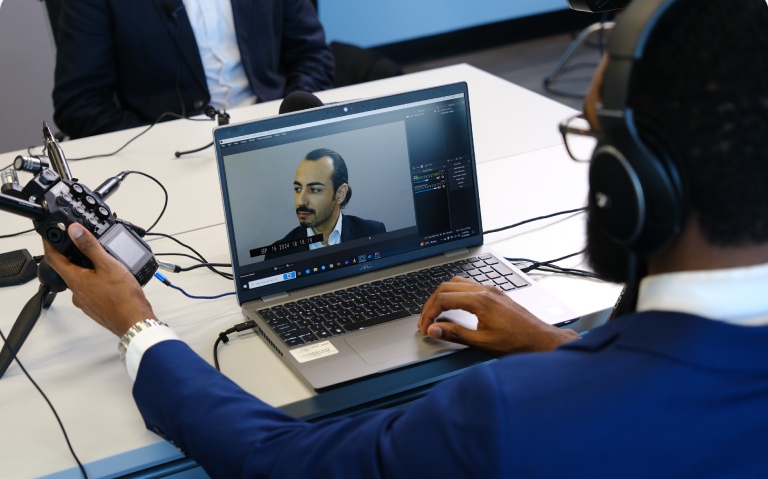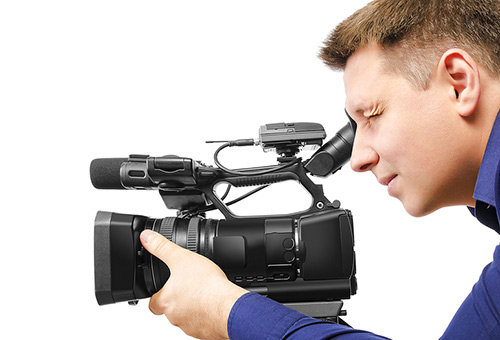Why Lawful Videography Is Important for Accurate Court Recordings
The function of legal videography in courtroom setups can not be overstated, as it serves as an important tool for maintaining the stability of court records. By capturing both spoken and non-verbal interaction, it enhances the quality of witness testaments and shows the nuances of court room interactions. This comprehensive documents not just aids in lowering prospective misunderstandings yet likewise sustains appellate evaluations, consequently strengthening the judicial procedure. Nevertheless, the ramifications of integrating lawful videography into basic court techniques increase important concerns about its broader influence on the lawful system. What might these ramifications require?
Relevance of Visual Evidence
In the world of lawful proceedings, the importance of visual proof can not be overstated. Visual evidence functions as an effective tool in establishing facts, proving statements, and improving the total quality of an instance. This type of evidence, which consists of photos, videos, and layouts, can supply a tangible context that verbal descriptions commonly do not have, thereby supplying juries and judges a more clear understanding of the circumstances surrounding a case.
Moreover, aesthetic proof aids in the retention of information. Human cognition is naturally visual, and people are more probable to bear in mind and understand info offered in a visual format. In the courtroom, this can be important, as compelling aesthetic evidence can guide opinions and reinforce the narrative presented by lawful reps.
Additionally, the use of visual evidence can reduce misunderstandings and ambiguities that often arise from spoken exchanges. By providing a straight depiction of occasions, aesthetic evidence helps to remove subjective interpretations and promotes a more objective exam of the facts. Subsequently, the combination of visual evidence into lawful process not just enhances the honesty of the judicial process but additionally enhances the possibility of achieving a just outcome.
Capturing Non-Verbal Hints
Using sophisticated videography methods can significantly improve the capture of non-verbal hints during legal proceedings. Non-verbal interaction, consisting of facial expressions, body language, and eye contact, plays a crucial role in conveying emotions and objectives that might not be explicitly stated in verbal testament. legal videography. Lawful videography employs high-definition cams and calculated angles to guarantee that these subtle cues are tape-recorded with clarity and precision
The ability to examine non-verbal habits can provide useful context to declarations made during court sessions. A witness's unwillingness or self-confidence can be translated with their pose or motions, possibly influencing the jury's understanding of trustworthiness. Moreover, the usage of close-up shots can aid concentrate on a speaker's expressions, enabling a more nuanced understanding of the testament.
Moreover, integrating multiple video camera angles can produce a detailed sight of interactions, highlighting dynamics between events involved. This complex technique not only enhances the precision of the court document yet also aids in preserving the integrity of the judicial procedure - legal videography. Inevitably, recording non-verbal hints with legal videography fosters a richer, extra full depiction of court room procedures

Enhancing Testament Dependability
The reliability of statement can be substantially reinforced through making use of high-quality lawful videography. Video recordings offer as an objective find out here tool that captures not only the talked words of witnesses however also the subtleties of their delivery, including tone, pacing, and psychological expressiveness. This complex paperwork gives a clearer understanding of the witness's credibility and intents, which can be crucial in lawful process.
Furthermore, lawful videography minimizes the capacity for false impressions that may develop from created records alone. When jurors can observe a witness's behavior and body movement along with their statement, they are much better equipped to evaluate the credibility and integrity of the evidence presented. This visual context can enhance the testimonial narrative, making it much more engaging and credible.
Additionally, the existence of a video clip recording can hinder potential disparities in statement. Witnesses might be a lot more mindful in their statements when they know they are being tape-recorded, causing even more exact and genuine accounts. Overall, top quality legal videography improves the integrity of statement, making sure that the court has accessibility to a total and sincere depiction of the truths as communicated by the witnesses.
Sustaining Appeals and Reviews
Legal videography plays a critical duty in sustaining allures and testimonials by giving a thorough aesthetic record of court proceedings. This aesthetic documents catches not only the talked words of witnesses and lawyers however also the subtleties of body language, tone of voice, and court room dynamics. Such components can be essential in understanding the context of testaments and disagreements provided.
In the appellate procedure, where the emphasis gets on mistakes of get more regulation and step-by-step justness, a video clip record can serve as an essential device for appellate courts. It makes it possible for judges to assess the original test context, making sure that decisions are based on a full understanding of the procedures. The capability to visually analyze the attitude of witnesses or the interactions between parties can disclose understandings that written records may overlook.

Additionally, lawful videography can aid in making clear ambiguities in testaments or procedural judgments, thus reinforcing the basis for a charm. By supplying a trusted, objective account of what taken place in court, legal videography not only sustains the stability of the legal procedure but likewise encourages all parties included to make informed decisions concerning their cases.
Improving Court Procedures
Enhancing court room efficiency, legal videography enhances procedures by giving immediate access to visual records of procedures. This modern technology permits judges, attorneys, and juries to revisit vital statement and proof, making certain that all parties have a clear understanding of the case. By recording the subtleties of verbal and non-verbal interaction, videography improves the document, making it easier to grasp the context and weight of testimonies.

Additionally, video clip recordings can assist in remote participation in hearings, enabling higher flexibility in organizing and participation, which is specifically important in intricate situations involving numerous stakeholders.
Conclusion
To conclude, legal videography plays a vital function in ensuring precise court recordings by providing necessary visual proof that captures both verbal and non-verbal interaction. This method boosts the reliability of testaments, supports appellate testimonials, and improves court room processes. By look at this now promoting a comprehensive understanding of court characteristics, lawful videography eventually adds to more equitable judicial end results, reinforcing the stability of the lawful system and facilitating notified decision-making.
Comments on “Legal Videography: A Crucial Tool for Ensuring Courtroom Transparency”